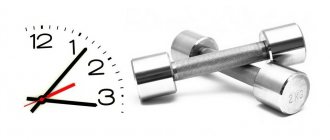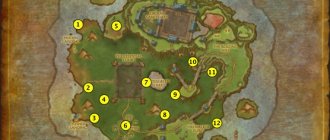Walking is considered one of the safest types of sports for losing weight and eliminating extra pounds for those people who physically do not have enough time or opportunity due to health conditions to exercise in special fitness centers and gyms.
The obvious benefit of walking is the complete elimination of various injuries to the body, and with its help you can get rid of not only excess fat, but also laziness, apathy and lethargy in the body, and become more positive and resilient. In this review, we will take a closer look at how many calories are burned when walking in an hour , as well as how to walk correctly and how to increase the level of kcal consumption. But first, let’s take a closer look at the main advantages and benefits of walking for the human body.
The benefits of walking
It’s worth noting right away that walking is one of the most common types of sports training and has particular benefits for the body, as it helps train the same groups of muscle fibers that are trained when running.
Moreover, race walking promotes:
- improving heart performance;
- saturation of all cells in the body with oxygen compounds;
- and it also does not have a negative effect on the knee joints.
Everyone can walk: fat, thin, young and old. After all, many people think that losing a little extra weight would not be bad at all. But, no matter how hard you try, it’s still difficult to fight extra pounds with a sedentary lifestyle, and not everyone can start actively playing sports. But everyone can take a walk after a hard day at work.
Number of calories burned when walking
Undoubtedly, in order to burn a certain amount of calories, a simple walk to the hospital or store will not be enough.
Video
Calorie consumption when walking, its level and quantity depends directly on the following aspects:
- from body weight;
- the presence or absence of additional weighting agents;
- age group;
- pace and speed;
- duration of training;
- the terrain of the path, it can be an ordinary flat road, or a more difficult uphill path;
- hand movement activity.
It is clear that if you walk at a fast pace, then the level of calories burned will be higher than when walking at a slow pace. At the same time, walking training will be more effective if carried out in clean air in a forest area, this can be not only a forest, but also a park. The presence of certain unevenness on the trail increases the load, but how many calories are spent walking 1 km? In an hour you can get rid of 200 to 300 kilocalories. The indicator indicating the amount of energy spent can be calculated independently using the following table, indicating the number of calories burned per kilogram of a person’s weight when walking per hour:
| Walking pace | Speed indicator | Number of calories burned |
| Average | 4 kilometers/h | 3,2 |
| Fast | 6 kilometers/h | 4,5 |
| Almost running | 8 kilometers/h | 10 |
There is a more convenient table according to which you can determine how much energy is spent depending on body weight and walking speed:
| Speed indicator/body weight | 50 kg | 55kg | 60kg | 65kg | 70kg | 75kg | 80kg | 85kg | 90kg |
| 3 km/h | 127 | 139 | 150 | 162 | 174 | 186 | 201 | 212 | 226 |
| 4 km/h | 160 | 177 | 192 | 209 | 223 | 240 | 256 | 272 | 288 |
| 5 km/h | 184 | 202 | 221 | 239 | 258 | 276 | 295 | 313 | 331 |
| 6 km/h | 216 | 238 | 262 | 283 | 304 | 327 | 348 | 369 | 392 |
| 7 km/h | 290 | 321 | 351 | 378 | 409 | 439 | 467 | 496 | 526 |
| 8 km/h | 375 | 410 | 449 | 488 | 524 | 563 | 598 | 636 | 673 |
| 9 km/h | 480 | 530 | 577 | 625 | 674 | 722 | 769 | 818 | 866 |
That is, for example, if you weigh 60 kg, if you walk for at least an hour at an average speed of 5 km/h, you can easily get rid of 221 calories. Carrying out such calculations is not as convenient as it seems at first glance, since it is necessary to correctly calculate the walking speed. To accurately calculate speed, you need to know exactly how many kilometers have been traveled. And if the path is not known, then the speed will be difficult to determine.
Video
You can count how many steps you take in 60 seconds, but then training will turn into pure mathematics, which will soon just get boring. Proponents of this type of training recommend purchasing special devices called pedometers. You simply put them on your hand, like a bracelet, and start walking; at the end of the workout, the device accurately displays the number of steps taken during the entire journey.
Reviews
Alina, 30 years old:
In the summer I changed my shoes to comfortable sneakers and bought a fitness bracelet. Now I walk a lot, I enjoy walking. I noticed that I have become more energetic, now I’m just fluttering around. After walking in the fresh air, I sleep soundly, and in the morning I feel cheerful and rested. No tedious workouts.
Svetlana, 25 years old:
Compared to training in the gym, walking, of course, will not replace a full-fledged cardio workout; not many calories are burned. But still, I don’t mind walking in the evening from work, where I spent the whole day at the computer. In combination with proper nutrition, any physical activity gives good results.
Antonina, 35 years old:
I received a fitness bracelet as a birthday gift. Wonderful thing! Calculates the number of steps taken and calories burned. Gradually increased the number of steps. Now I walk 20,000 steps a day. I noticed that if you walk quickly and swing your arms vigorously, you burn more calories.
How to walk
It is not recommended to suddenly start walking at a fast pace and for a long period of time, especially for older people with a weight clearly exceeding 60 kilograms. You need to start walking at a slow pace for an hour until your body gets used to this type of walk. After which you need to gradually increase the pace over 5 minutes, next time over 10, and so on until the walking pace increases to the average setting within an hour. And in order to increase the number of calories burned, it is recommended to walk at an even faster pace for a longer period of time.
Please note: The main rule that you should not forget about is that you need to walk for at least an hour, since excess fat begins to burn only after 40 minutes of intense training.
Moreover, you should not exercise after eating. The most optimal time for walking is considered to be an hour after a meal. And after finishing your workout, you should not eat food; it is better to limit yourself to a glass of water or snack on an apple. When walking, it is very important to maintain the rhythm of the correct breathing act, in which you need to inhale through your nose and exhale through your mouth. It is necessary to completely give up the habit of smoking, as it has a negative effect on the entire respiratory system and reduces the performance of the heart and blood vessels.
Rules for active walking
For weight loss, the benefits of walking in a straight line or on stairs are undeniable. However, there are rules for active walking and walking in place, and in order to do everything correctly, you need to know them:
- You need to walk for at least 60 minutes. ¾ of this time the reserve of carbohydrates is burned, not subcutaneous fat. At the moment when glucose is completely broken down, the body begins to use up its reserves. After a walk, active metabolism remains active for some time.
- You need to walk before meals twice a day. After eating food, the stomach still digests it for a long time, there is weakness in the knees and a general inability to perform physical activities. Fast walking is a serious obstacle to the functioning of the digestive organs. Therefore, you may experience abdominal discomfort, colic, or belching.
- If you're really hungry after a walk, it's better to snack on something low-calorie. A fruit or vegetable is suitable for this. Women on a diet are not surprised by such a diet. You can drink low-calorie kefir or skim milk. Satisfy your hunger a little, and you can start eating 1 hour after your walk.
- If you decide to lead a healthy lifestyle, walk several kilometers a day and lose weight, then go all the way. The use of alcohol and tobacco is not recommended at this time. These substances have a destructive effect on the human nervous, vascular and bronchopulmonary systems.
- During the day you need to walk at least 7 km. Any time of year and weather conditions are suitable for such walks. The only exceptions may be natural disasters - hurricanes, heavy snowfalls and heavy rains. If you overexert yourself in the first days of walking, you have pain in your muscles, knees and buttocks, you can walk for a couple of days at a calm pace for a shorter distance (or temporarily switch to walking in place). In this case, you will strengthen not only your body and nervous system, but also boost your immunity.
- It is best to divide the number of kilometers into morning and evening. If you walk briskly for an hour in the morning and three hours in the evening, this is an ideal option for active weight loss, strengthening the abdominal muscles and buttocks.
- At first, try not to take a fast step. For a day or two you just need to walk. This helps to accustom your body to the innovation and not provoke severe knee pain. Walk at a moderate pace, swing your arms evenly and move your legs, bending them slightly at the knees. The best way to prepare for outdoor walking is walking on a treadmill. In addition, with the help of the exercise machine you will remove fat from your buttocks. Knee pain will go away as soon as your body gets used to this routine.
- An important point is the correct choice of clothing. It should not be tight so that it does not rub or interfere with walking. It is preferable to wear sneakers on your feet.
- Breathe with your mouth slightly open, adjusting to the rhythm of your steps. To do this, you just need to listen to your body and movements. Leave your phone and best friend at home. Talk about how to lose weight by walking in a straight line or up stairs when you achieve certain results in this difficult task. It is better not to talk while walking so as not to shorten your breath.
- If you intend to go a long way, you can stock up on water. A small bottle or flask is required. This is especially recommended in the summer. The liquid should not be cold so as not to catch a cold. You can carry water and other necessary things in a small backpack on your back.
Ways to increase calorie expenditure
There are several methods that allow you to increase the level of load, with the help of which you can completely correct your entire figure, tighten your stomach and pump up your butt.
Swing your arms
To effectively work the muscle fibers in the upper body, it is recommended to swing your arms, which will help you walk faster and increase the load. To do this, you need to bend your arms at the elbow joint to an angle of 90 degrees and make rapid amplitude oscillations with them.
Use useful weights
Additional weight will increase the load and increase the intensity of burning excess fat. It is important to remember that special weights for the legs and wrists are not recommended, as this can negatively affect your posture and contribute to changes in gait. It is better to use a backpack as additional weight, and for proper weight distribution it is recommended to fill the backpack with sand or water.
Walk with poles
Nordic walking is considered one of the most effective methods of increasing the quantitative indicator of calorie burning. Every person, at any age and with any level of physical fitness, can use it, appreciating how effective this sport is and getting incredible results from it. During Nordic walking, up to 90 percent of the muscle mass throughout the body is used, and 46 percent more calories are lost than during regular training.
Video
With the help of sticks, the level of stress on the following parts of the body is reduced:
- ankle joint;
- knees;
- as well as on the area of the hip joints.
This method of walking is considered the most effective, since the load on the legs increases instantly and significantly, plus the muscle fibers of the upper back and arms are connected to the overall work of the whole body.
Treadmill
The best alternative to street walking is a treadmill. The average speed of an ordinary person reaches 4-5 km. per hour, so to increase the level of calories burned, it is recommended to increase the pace of walking on the track to 6.5 km. at one o'clock. As the pace increases, energy consumption increases almost 3 times.
Walk on uneven terrain
If you walk on uneven surfaces such as grass, paths, snow, sand, or gravel, your caloric expenditure will at least double. You can also walk at an average pace along stairs or along mountain paths. And walking forward with your back will help improve your posture, tighten your butt and pump up your calf muscle fibers. Don’t forget about proper nutrition, since it is a balanced diet in combination with sports training that will contribute to the most effective burning of excess fat and preventing its re-gain.
Walking or running?
What is better - running or walking for weight loss? Let's compare these types of physical activity.
Benefits of running
- This sport will allow you to lose weight faster and more intensely due to greater activity and the ability to burn calories faster.
- To burn the same amount of calories, you will need to spend much more time walking.
- Running strengthens muscles better by putting more strain on them. Accordingly, the relief of the hips improves faster.
- This sport allows you to “escape” from depression and sad thoughts.
The benefits of walking
- The main advantage of this type of load is that it has no contraindications. Walking can be freely practiced by people with musculoskeletal problems, heart disease and obesity.
- This method of losing weight is much less traumatic and will not harm ligaments and joints.
- For an untrained person, brisk walking is enough to reach the maximum permissible heart rate for useful cardio training. Only experienced athletes can run at the correct (low) heart rate.
- Walking promotes mental activity. Why not “reinvent the wheel” while walking?
To approximately equalize the number of calories expended during these types of activities, you should walk with weights.










